Showing Spotlights 97 - 104 of 627 in category All (newest first):
 Scientists have created a new way to monitor subtle drug interactions between bacteria and antibiotics. By using a common office inkjet printer, researchers developed a disposable living laser on chip by encapsulating living bacteria inside. Strong laser emissions generated from bacteria inside the droplet will be dramatically enhanced during drug interactions. This breakthrough could enable more sensitive and high-throughput testing using micro-nano laser technology in the near future.
Scientists have created a new way to monitor subtle drug interactions between bacteria and antibiotics. By using a common office inkjet printer, researchers developed a disposable living laser on chip by encapsulating living bacteria inside. Strong laser emissions generated from bacteria inside the droplet will be dramatically enhanced during drug interactions. This breakthrough could enable more sensitive and high-throughput testing using micro-nano laser technology in the near future.
Mar 25th, 2021
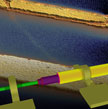 The properties ofvan der Waals heterostructures can be precisely controlled by twisting the stacked atomic layers, opening the way for the use of this unique degree of freedom for the nanoscale control of composite materials and nano-devices in future technologies. New work suggests that all 2D materials could also be rolled into their 1D counterparts and a plethora of function-designable 1D heterostructures could be realized. Unlike semiconductor nanowires or mono-elemental nanotubes, which are rolls of one type of material, these novel nanostructures would have very different, and customizable, properties.
The properties ofvan der Waals heterostructures can be precisely controlled by twisting the stacked atomic layers, opening the way for the use of this unique degree of freedom for the nanoscale control of composite materials and nano-devices in future technologies. New work suggests that all 2D materials could also be rolled into their 1D counterparts and a plethora of function-designable 1D heterostructures could be realized. Unlike semiconductor nanowires or mono-elemental nanotubes, which are rolls of one type of material, these novel nanostructures would have very different, and customizable, properties.
Mar 2nd, 2021
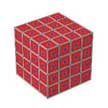 In another step towards engineered living materials, researchers combined living bacteria and 3D-printed materials to grow bionic mineralized composites with ordered microstructures. It provides an example of harnessing living bacteria to design self-growing materials and opens the door for a new class of engineering materials that can self-grow like living creatures. This manufacturing strategy can be easily extended by selectively controlling the activity of living organisms to synthesize unprecedented structural composites with ordered, hierarchical, and gradient microstructures.
In another step towards engineered living materials, researchers combined living bacteria and 3D-printed materials to grow bionic mineralized composites with ordered microstructures. It provides an example of harnessing living bacteria to design self-growing materials and opens the door for a new class of engineering materials that can self-grow like living creatures. This manufacturing strategy can be easily extended by selectively controlling the activity of living organisms to synthesize unprecedented structural composites with ordered, hierarchical, and gradient microstructures.
Feb 23rd, 2021
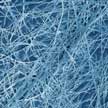 Researchers demonstrate composite materials with exceptional EMI shielding in the GHz and sub-THz frequency ranges while remaining electrically insulating. The composites use unusual fillers - chemically exfoliated bundles of quasi-one-dimensional van der Waals materials. The exceptional current conduction properties combined with extremely large aspect ratio of these composites couple strongly to high-frequency RF radiation while remaining electrically insulating in DC measurements.
Researchers demonstrate composite materials with exceptional EMI shielding in the GHz and sub-THz frequency ranges while remaining electrically insulating. The composites use unusual fillers - chemically exfoliated bundles of quasi-one-dimensional van der Waals materials. The exceptional current conduction properties combined with extremely large aspect ratio of these composites couple strongly to high-frequency RF radiation while remaining electrically insulating in DC measurements.
Feb 18th, 2021
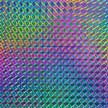 Beyond aesthetics, holograms on food - specifically, edible holograms - could be used to reduce packaging needs, for example, as information about nutritional content or labels could be printed directly onto the food item. To that end, researchers have developed a quick and low-cost fabrication method for producing holograms on edible substrates. They developed a direct laser interference pattering method to directly pattern one-dimensional nanostructures on corn syrup films.
Beyond aesthetics, holograms on food - specifically, edible holograms - could be used to reduce packaging needs, for example, as information about nutritional content or labels could be printed directly onto the food item. To that end, researchers have developed a quick and low-cost fabrication method for producing holograms on edible substrates. They developed a direct laser interference pattering method to directly pattern one-dimensional nanostructures on corn syrup films.
Feb 17th, 2021
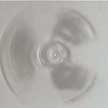 Magnetic manipulation of nano- and microscale objects is a remote and non-invasive technology with potentially numerous applications in material sciences and life sciences, such as for instance drug delivery. However, a limitation of this technology is that it can only be applied to certain materials with magnetic response, i.e., ferromagnetic or superparamagnetic materials. A new technique allows to incorporate magnetic nanoparticles onto the nonmagnetic skeleton.
Magnetic manipulation of nano- and microscale objects is a remote and non-invasive technology with potentially numerous applications in material sciences and life sciences, such as for instance drug delivery. However, a limitation of this technology is that it can only be applied to certain materials with magnetic response, i.e., ferromagnetic or superparamagnetic materials. A new technique allows to incorporate magnetic nanoparticles onto the nonmagnetic skeleton.
Feb 11th, 2021
 Virtual reality (VR) and augmented reality (AR) are some of the hottest multidisciplinary technology trends right now, integrating computer, various sensor, graphic image, communication, measurement and control multimedia, artificial intelligence, and other technologies. Interactive electronic textiles will provide suitable platforms for VR/AR applications to provide a full range of sensory perceptions. Intrinsic conductive nanomaterials such as carbon nanotubes and metallic nanowires as well as nanoscale devices such as triboelectric nanogenerators are key to developing these electronic textiles.
Virtual reality (VR) and augmented reality (AR) are some of the hottest multidisciplinary technology trends right now, integrating computer, various sensor, graphic image, communication, measurement and control multimedia, artificial intelligence, and other technologies. Interactive electronic textiles will provide suitable platforms for VR/AR applications to provide a full range of sensory perceptions. Intrinsic conductive nanomaterials such as carbon nanotubes and metallic nanowires as well as nanoscale devices such as triboelectric nanogenerators are key to developing these electronic textiles.
Dec 7th, 2020
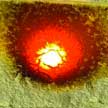 Wearable thermal insulation materials for harsh environments always require a compromise during their design and manufacturing. On one hand they need to be mechanically tough to provide impact resistance. On the other hand they need to be heat resistant. Now, researchers have developed a wearable aramid/ceramic aerogel nanocomposite material with both excellent mechanical and thermal properties. The key to this fabrication method is the in situ crosslinking that takes place between the silica pre-ceramic aerogel precursor and the Kevlar fibers.
Wearable thermal insulation materials for harsh environments always require a compromise during their design and manufacturing. On one hand they need to be mechanically tough to provide impact resistance. On the other hand they need to be heat resistant. Now, researchers have developed a wearable aramid/ceramic aerogel nanocomposite material with both excellent mechanical and thermal properties. The key to this fabrication method is the in situ crosslinking that takes place between the silica pre-ceramic aerogel precursor and the Kevlar fibers.
Nov 30th, 2020
 Scientists have created a new way to monitor subtle drug interactions between bacteria and antibiotics. By using a common office inkjet printer, researchers developed a disposable living laser on chip by encapsulating living bacteria inside. Strong laser emissions generated from bacteria inside the droplet will be dramatically enhanced during drug interactions. This breakthrough could enable more sensitive and high-throughput testing using micro-nano laser technology in the near future.
Scientists have created a new way to monitor subtle drug interactions between bacteria and antibiotics. By using a common office inkjet printer, researchers developed a disposable living laser on chip by encapsulating living bacteria inside. Strong laser emissions generated from bacteria inside the droplet will be dramatically enhanced during drug interactions. This breakthrough could enable more sensitive and high-throughput testing using micro-nano laser technology in the near future.
 Subscribe to our Nanotechnology Spotlight feed
Subscribe to our Nanotechnology Spotlight feed





